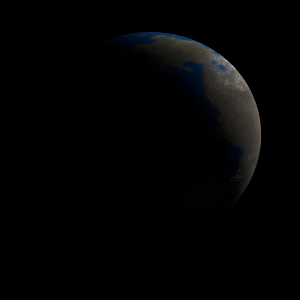|
|
Space Astro
|
Info for exoplanet "Bian Me"
| Scientific (actual) data |
|---|
| Name | Kepler-440 b |
| Planet status | Confirmed |
| Radius | 0.17 |
| Orbital period | 101.111 |
| Semi major axis | 0.242 |
| Orbit eccentricity | 0.34 |
| Inclination | 89.93 |
| Discovered | 2015 |
| Updated | 2021-02-05 |
| Tconj | 2455760 |
| Tzero tr | 2455760 |
| Impact parameter | 0.09 |
| Publication | Published in a refereed paper |
| Detection type | Primary Transit |
| Radius measurement type | Primary Transit |
| Alternate names | 2MASS J19012398+4127079 b, K04087.01, KIC 6106282 b, KOI-4087 b, KOI-4087.01, WISE J190124.00+412708.3 b |
| Star name | Kepler-440 |
| Right ascension | 285.35° |
| Declination | 41.45° |
| Mag v | 15.5 |
| Mag j | 12.96 |
| Mag h | 12.323 |
| Star distance | 261 |
| Star metallicity | -0.3 |
| Star mass | 0.57 |
| Star radius | 0.56 |
| Star age | 1.3 |
| Star temperature | 4134 |
| Star alternate names | 2MASS J19012398+4127079, KIC 6106282, KOI-4087, WISE J190124.00+412708.3 |
| Wikipedia article | Kepler-440 b |
Back
| |
| Fictional info (?) |
|---|
| Suggested name | Bian Me |
| Planet type | Cold planet |
| Because of its rapid rotation, the planet's shape is that of an oblate spheroid (it has a slight but noticeable bulge around the equator). The outer atmosphere is visibly segregated into several bands at different latitudes, resulting in turbulence and storms along their interacting boundaries. |
| Atmosphere | Carbon monoxide | 99% |
| Ozone | 0.0038% |
| Atmospheric pressure | 2.5 bar |
 |
| No known satellites |
| Google search for Bian me |
|
Website by Joachim Michaelis
|
|
|
|